Future Batteries The New Era of Energy Storage?
The future of energy storage lies in new and advanced battery technologies that can store more energy, last longer, and be more environmentally friendly.
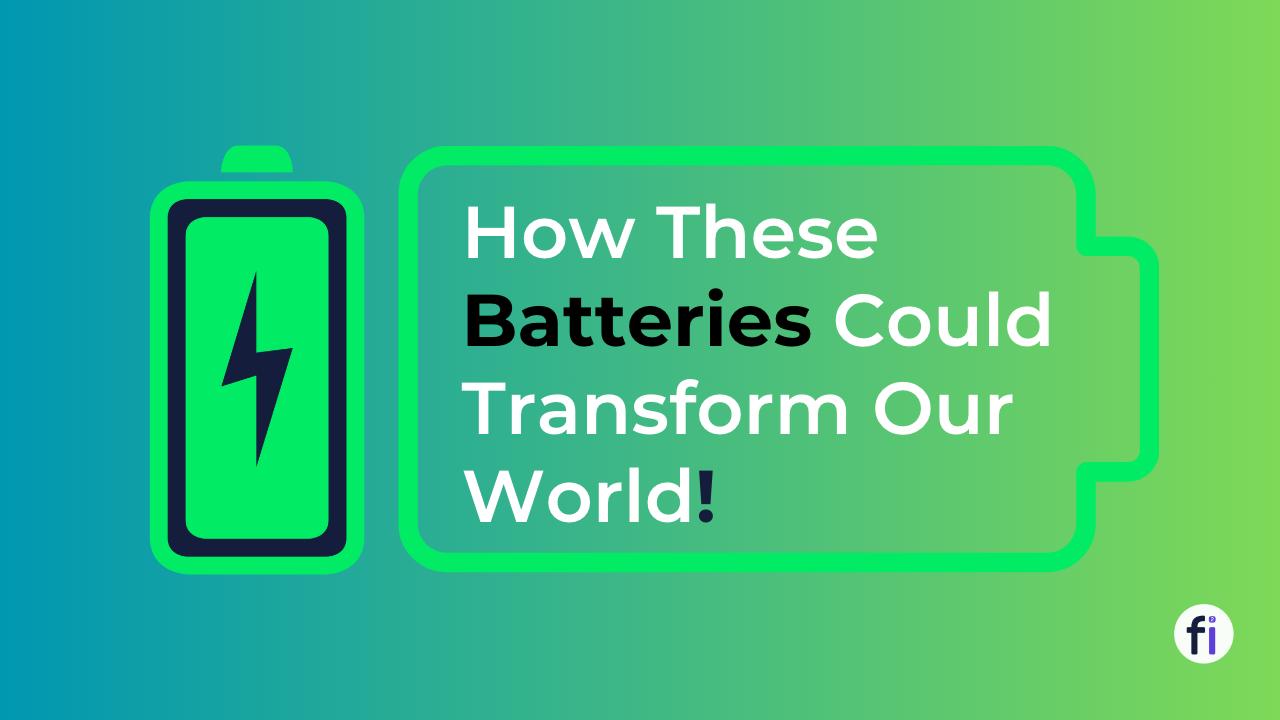
In today's world, it is hard to imagine life without our smartphones, laptops, and electric vehicles. We all want devices that can charge quickly and hold their charge for longer periods of time. Cheaper and more efficient energy storage options are essential to improve our daily lives. However, the current battery technology, lithium-ion, which is the current reigning battery champion, has certain drawbacks.




Undoubtedly, battery technology is a critical component in almost all emerging technology, from personal devices like smartphones and wearables to home energy storage and electric vehicles. Electric mobility relies on a stronger and lighter battery, whereas grid and home energy storage require highly resilient and long-lasting batteries. Furthermore, improving battery supply chains and recycling efforts is essential, which can be partially achieved through battery technology itself.
Over the past year, several unique batteries with exciting properties have emerged. With so many options available, it can be challenging to keep track of all of them. Therefore, in this article, we aim to provide a recap of the five novel batteries that we should keep an eye on in 2023 and beyond.
Lithium-ion (NMC): From Smartphones to EVs
Let's start with the baseline for comparing all other batteries: lithium-ion, specifically NMC lithium-ion batteries.

Lithium-ion batteries are the current champions in the battery industry. Lithium, being the lightest metal on the periodic table and highly reactive, makes it an ideal choice for batteries. Lithium-ion batteries are lightweight, charge quickly, and have both good energy density and cycle life. The chemistry of lithium batteries can be formulated in several different ways, but we will focus on nickel-manganese-cobalt (NMC) due to its excellent all-around performance.
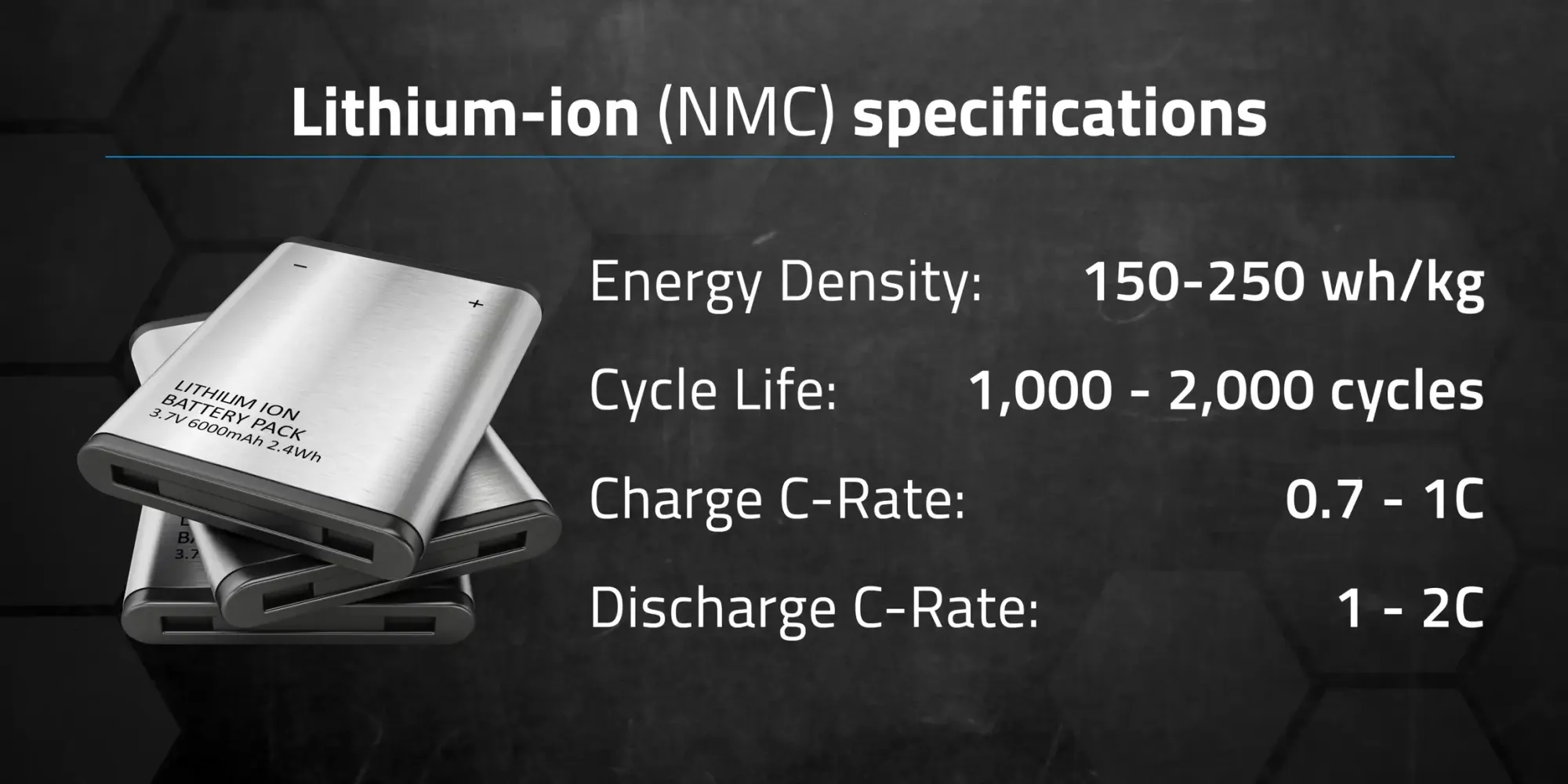
NMC batteries are cheaper and more energy-dense than their peers, making them the preferred choice. They have a specific energy (energy density) of between 150-250 wh/kg in most cases. They also offer great performance, with a cycle life of around 1000-2000 cycles, and a charging C-rate of around .7-1C and a discharge of 1-2C.
With the long history of lithium-ion batteries and their proven reliability and performance, it is easy to understand why lithium-ion NMC is the battery to beat.
What is C-Rate?
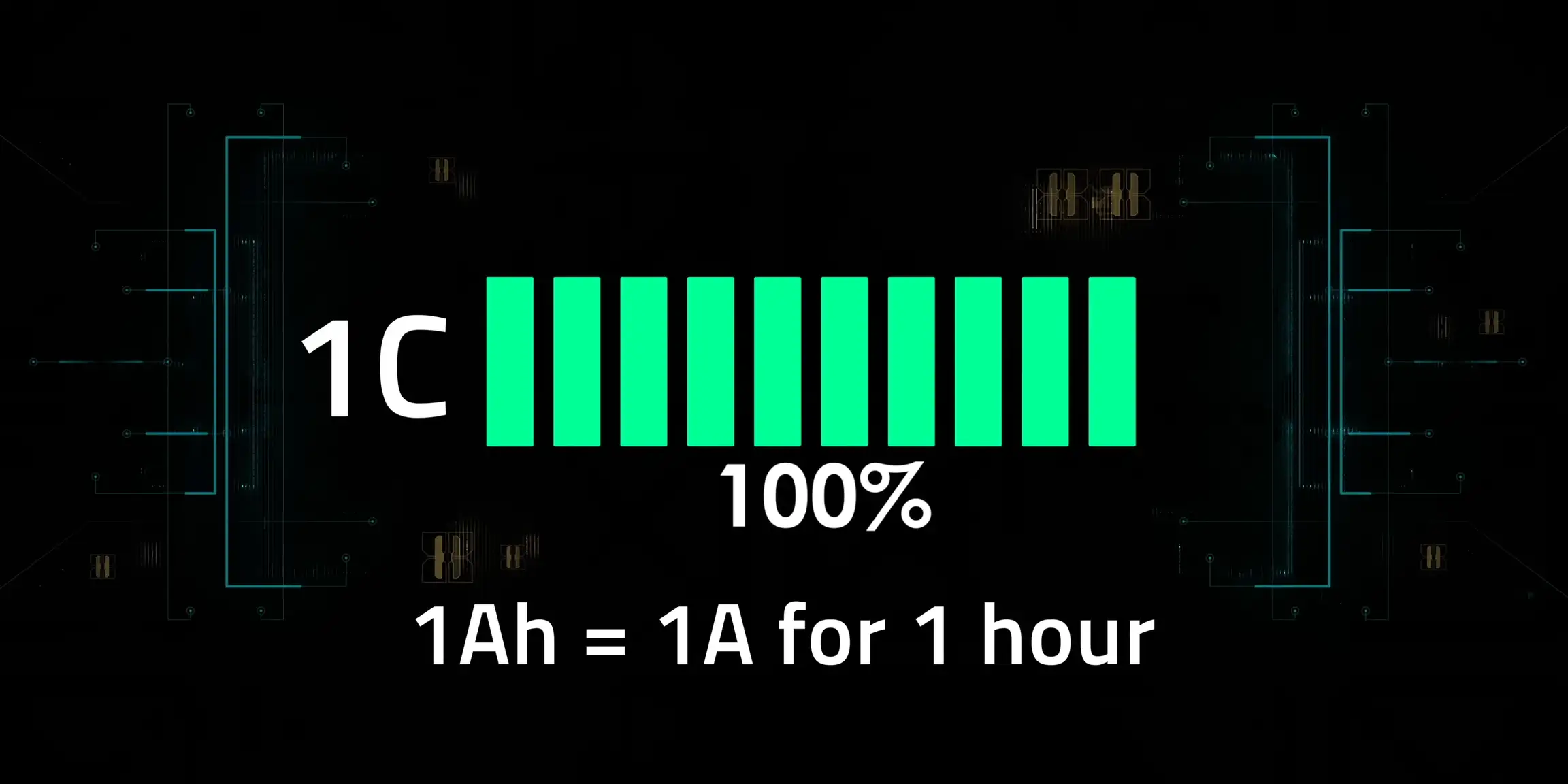
For those who do not know what a C-rate is, it is a relative metric that determines how fast a battery can be fully charged or discharged. A battery's fully charged capacity is usually rated at 1C, meaning that a 1Ah battery should provide 1A for one hour.
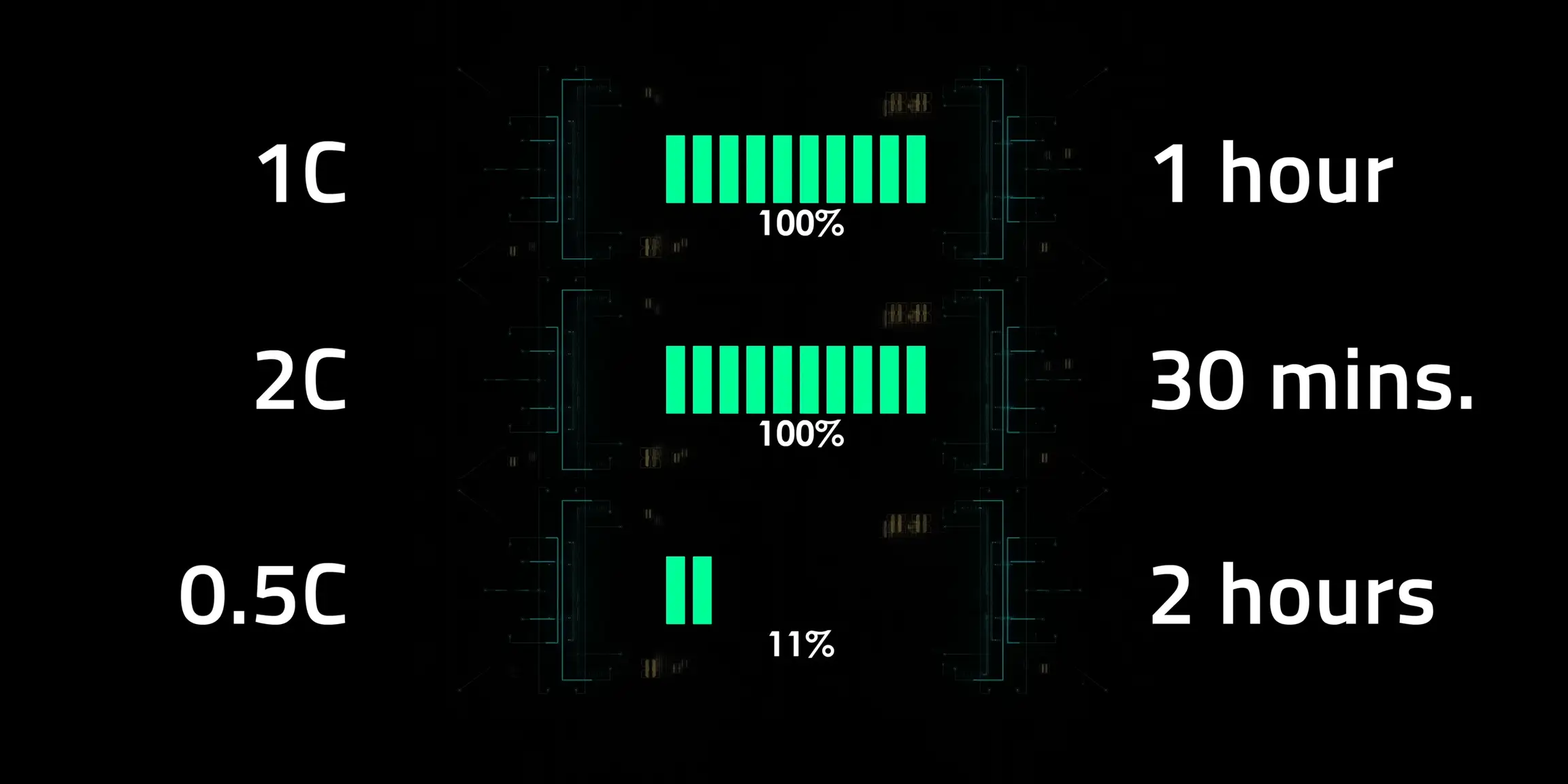
The C-rate is applicable to the charging and discharging rate of a battery. For instance, a C-rate of 1C means that the battery can go from 0 to 100% in one hour. A C-rate of 2C is twice as fast, while a 0.5C would be half as fast.
1. Solid State Batteries
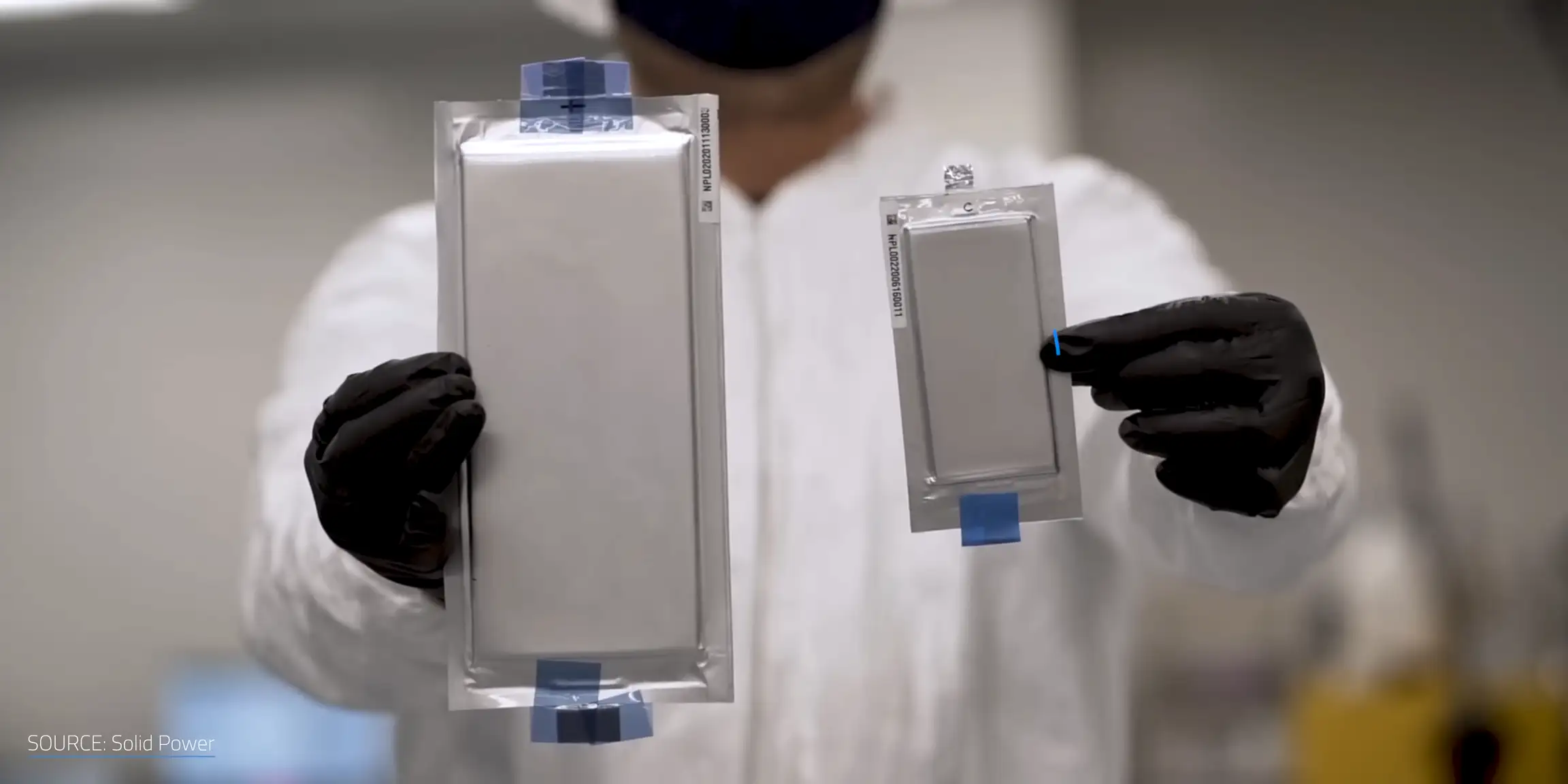
Solid State batteries have been the subject of much hype for some time. These batteries are touted as a game-changer for the energy storage industry because they eliminate many of the issues associated with traditional lithium-ion batteries.

Solid state batteries replace the liquid electrolyte with a solid material such as glass or ceramic. This design feature gives them a more robust structure that can store energy more efficiently.
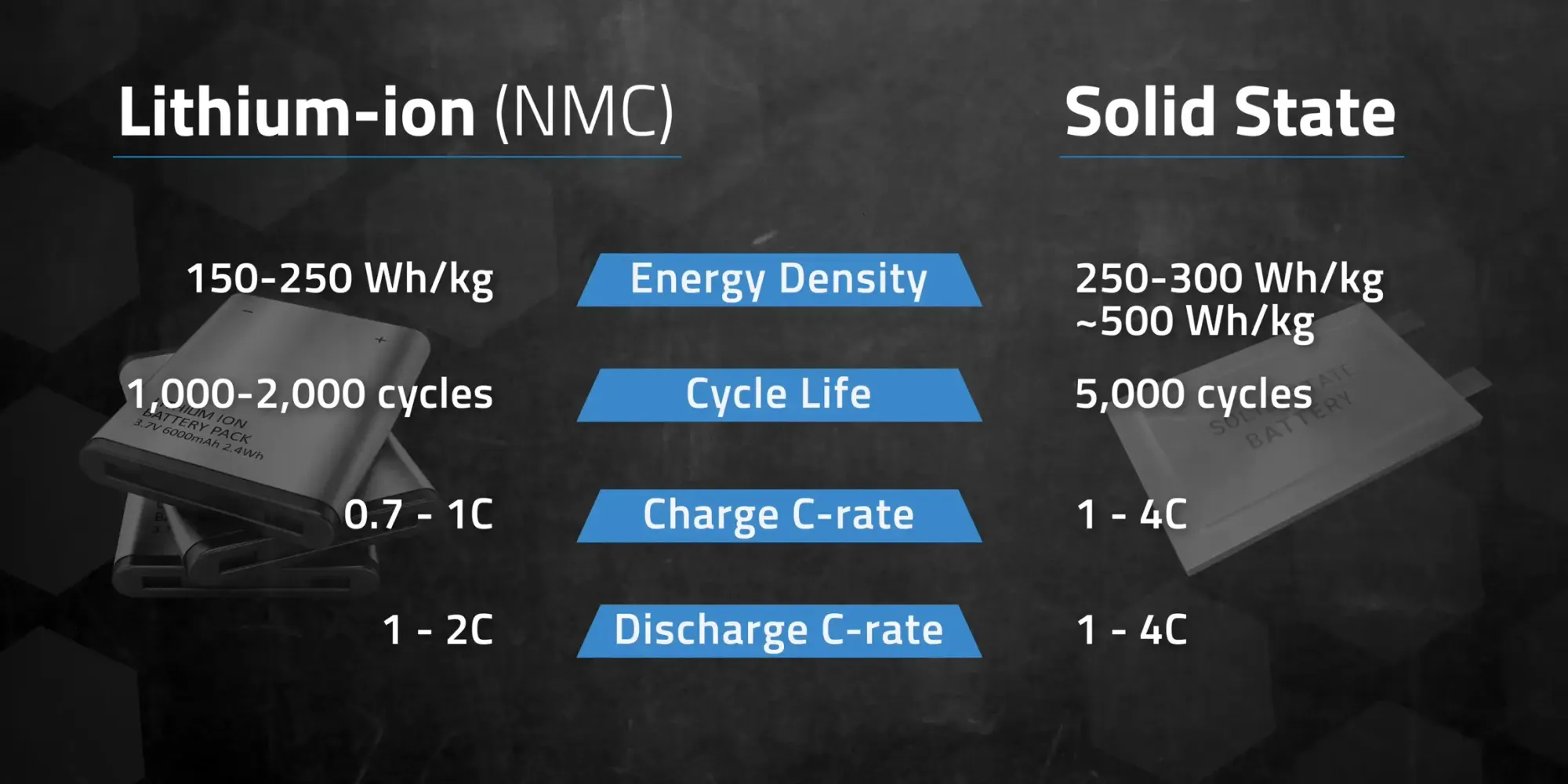
Despite being just a few years away from commercialization, these batteries have a solid energy density of 250-300 Wh/kg, and some reports suggest up to 500 Wh/kg. Moreover, they offer a healthy cycle life of 5,000 cycles, depending on the charge and discharge rate. Recent findings suggest the possibility of an incredible 23,000 discharge cycles for glass batteries. QuantumScape, a U.S.-based manufacturer, has been testing its batteries at a rate of 1C and 4C, but they don't have the same absurdly high cycle life.
However, while solid state batteries seem to offer many benefits, they are still expensive to manufacture. As a result, they are likely to be initially released in specific consumer electronics and EVs, where the premium price can be justified. According to Nobel prize laureate and lithium-battery father, John B. Goodenough, we may not see these batteries for another five years or so. Even after that, it will be some time before they are affordable enough to be used in EVs, where they can make a significant difference.

2. Sodium-ion Batteries
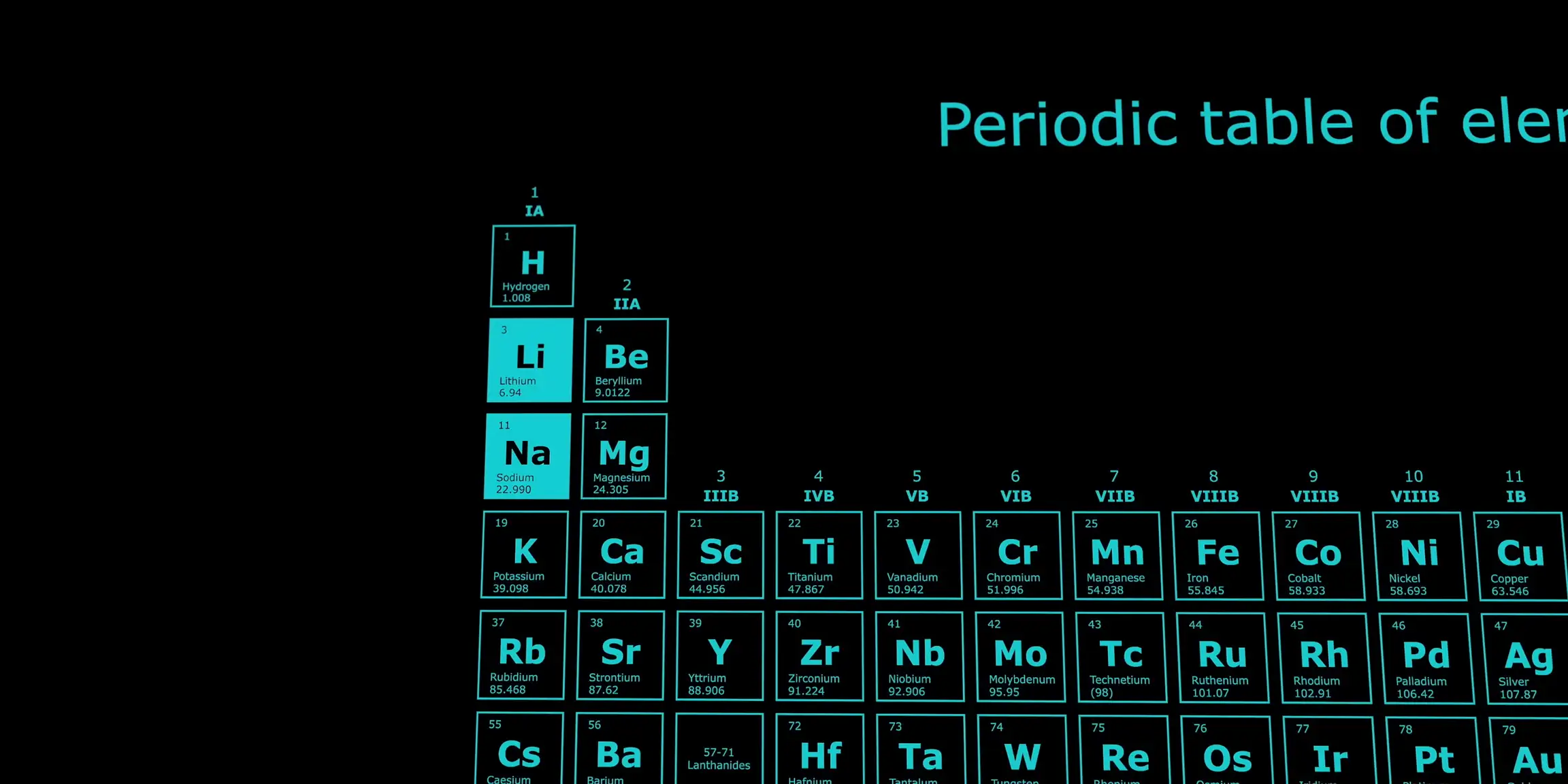
Sodium, a chemical element located right next to lithium on the periodic table, shares many similarities with lithium in terms of atomic structure. However, sodium is much more abundant than lithium.
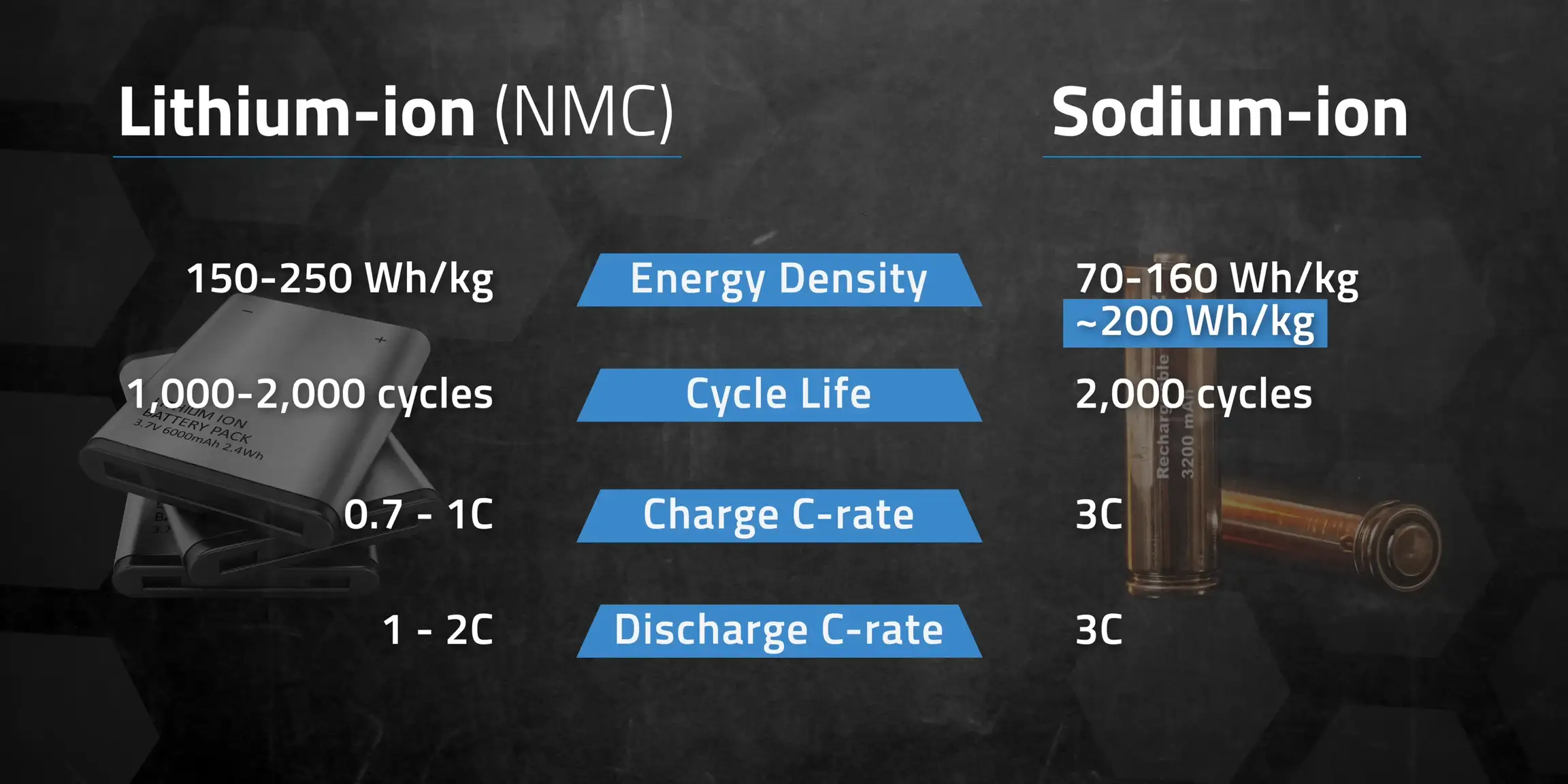
Sodium-ion batteries are known for their longevity and can last up to 2,000 cycles, with the potential for further improvement in the future. However, it's important to note that sodium batteries have a lower energy density of only 70-160 Wh/kg compared to NMC batteries. Nevertheless, there is a possibility for sodium batteries to reach 200 Wh/kg in the future.
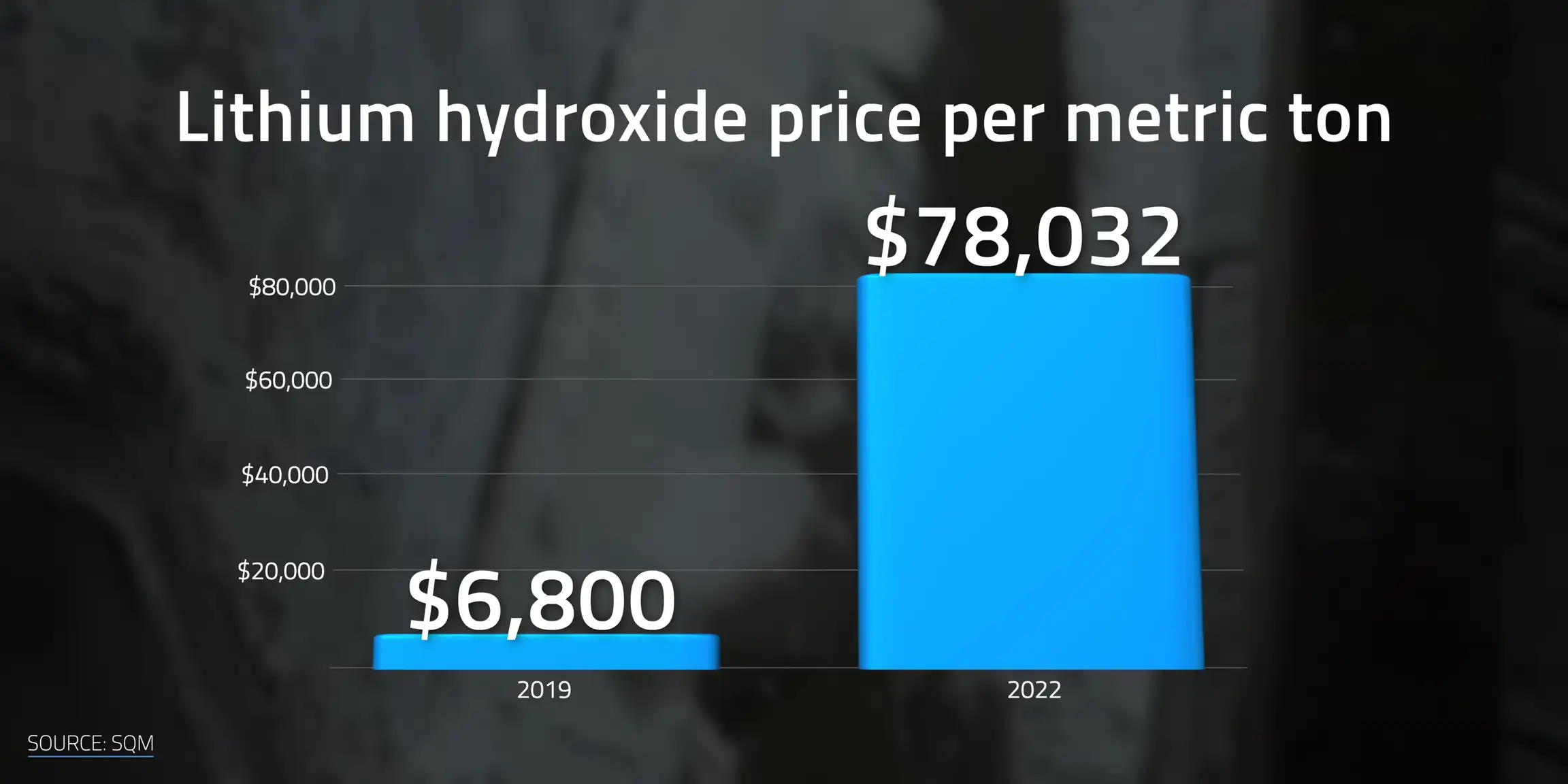
Despite the lower energy density, sodium batteries excel in terms of cost-effectiveness. In comparison to lithium hydroxide, which rose from $6,800 in 2019 to $78,032 per metric ton, sodium hydroxide is only below $800 per metric ton. Additionally, sodium shares production methods and components with lithium, making it cheaper and easier to transition to sodium-ion manufacturing.

Currently, the lower Wh/kg of sodium batteries makes them better suited for stationary storage applications rather than in electric vehicles. However, this may change soon as developers like Faradion, based in England and Wales, are about to transition from pilot to commercial-scale production. Chinese battery giant CATL also plans to launch its sodium-ion batteries into the market this year.
3. Aluminium-ion Batteries
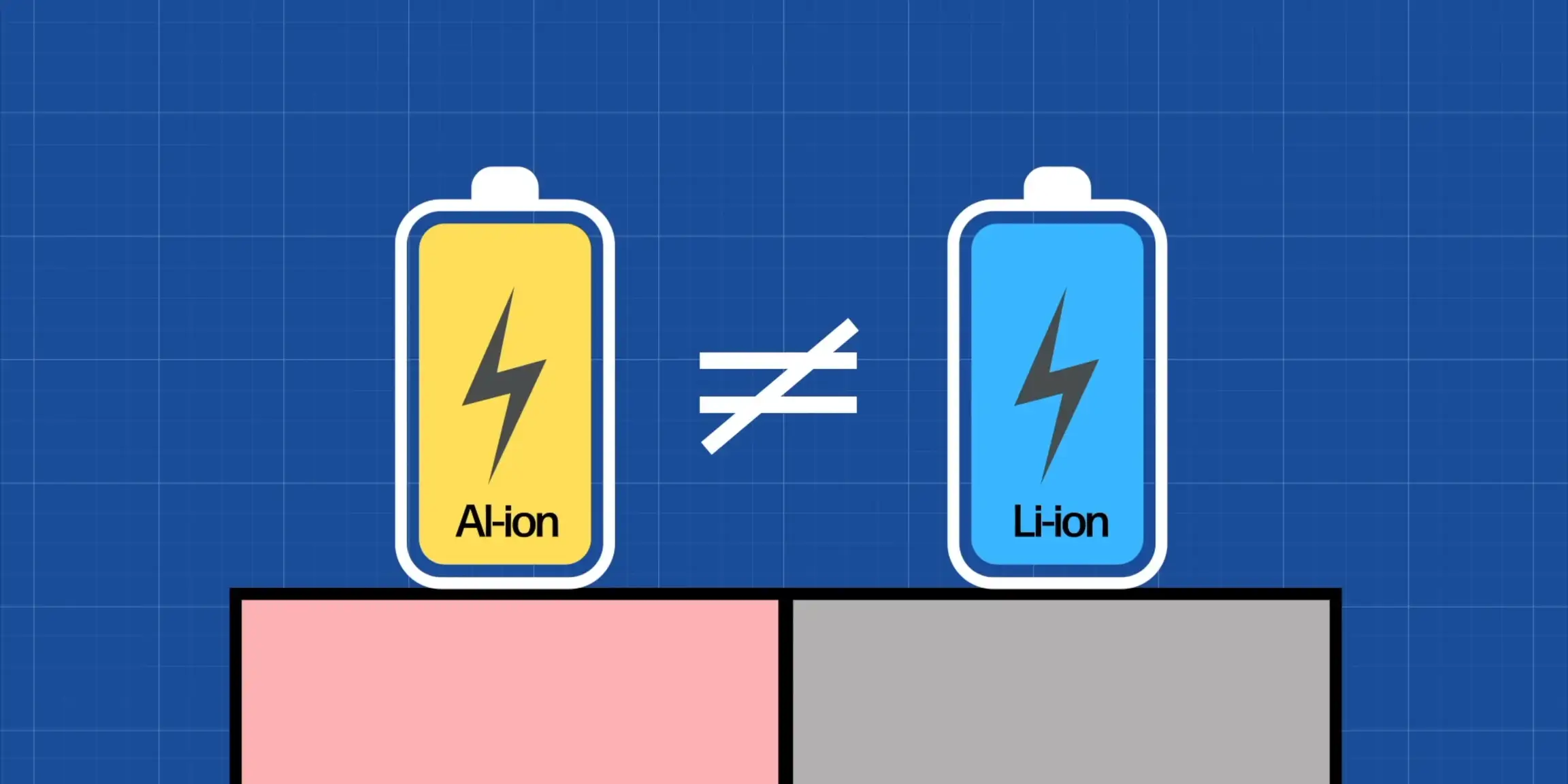
These batteries are quite similar to standard lithium batteries, with one key difference: Aluminium has the potential to exchange more electrons per ion. When more electrons are exchanged per ion, it can result in a higher energy density and capacity.
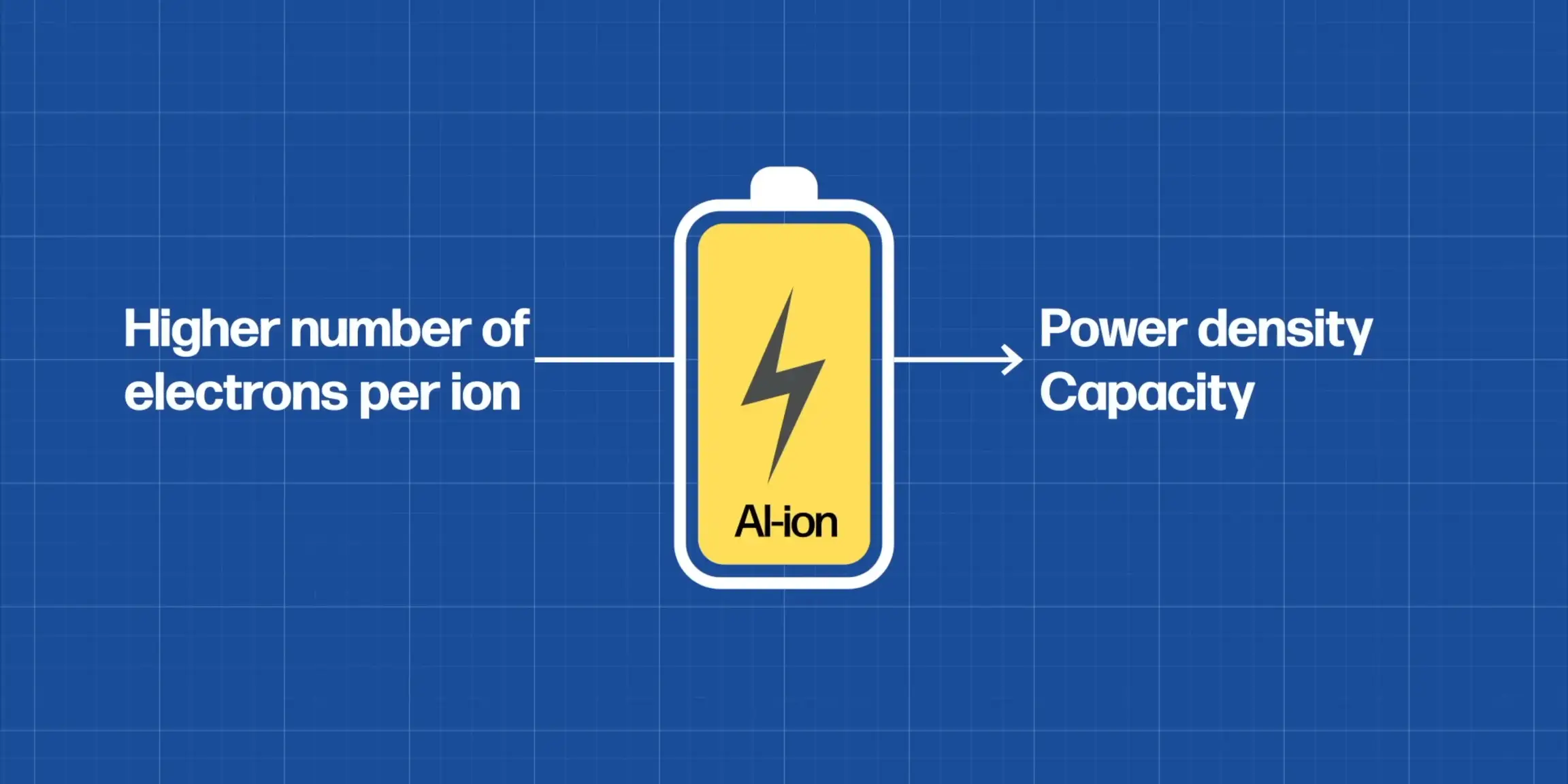
Australian company Graphene Manufacturing Group (GMG), in collaboration with the University of Queensland, has successfully developed an Al-ion battery with an energy density of 160 Wh/kg. More recent tests have shown that this figure can be doubled.
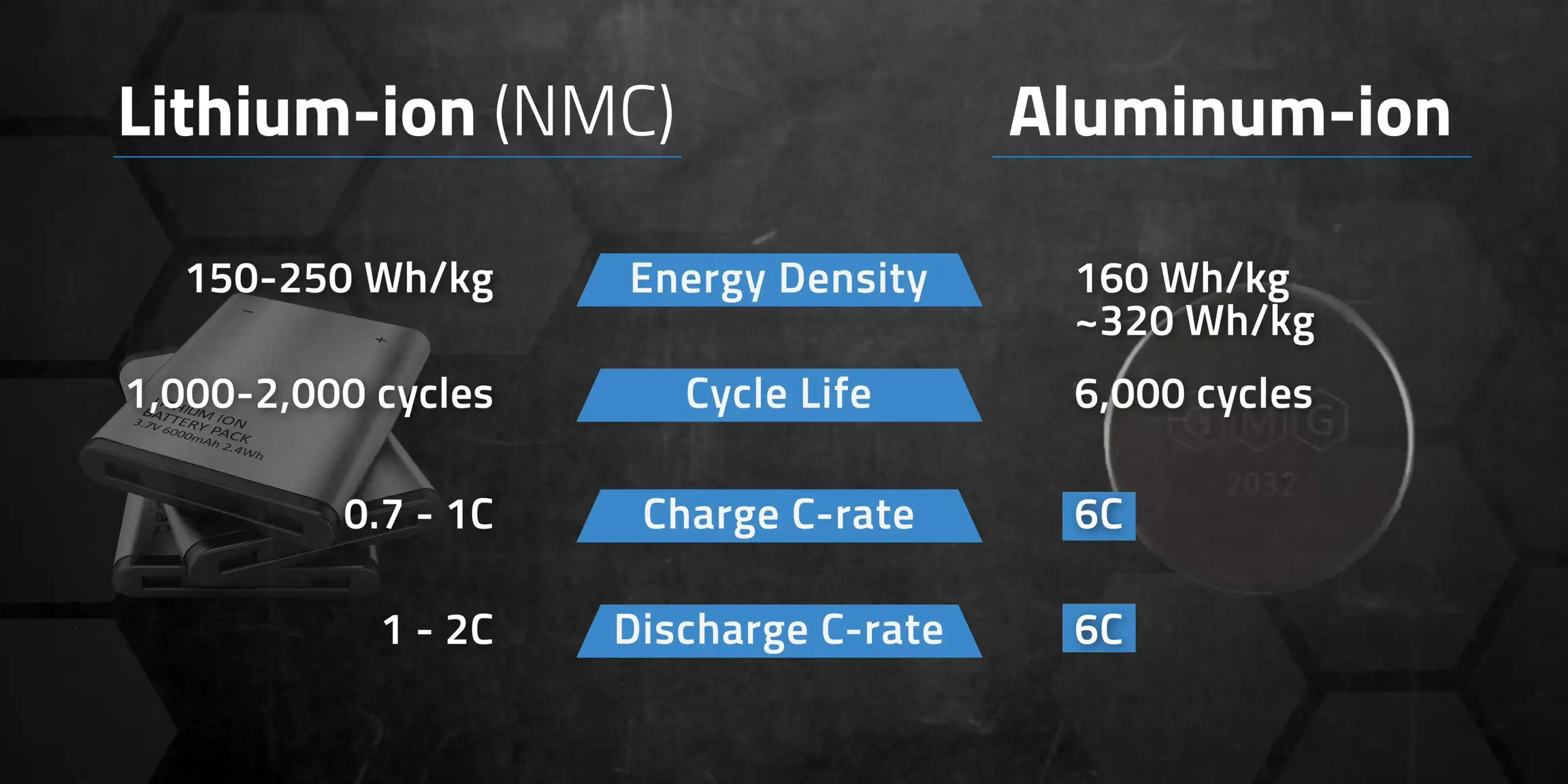
According to statistics, the possible energy densities of aluminium batteries can reach up to 200 Wh/kg, with cycle lives of around 6,000 and a C-rate of 6C for charge/discharge.
One of the major advantages of aluminium is its price, availability, and ease of recycling. The aluminium and graphene used in GMG's battery are exceptional at dissipating heat from the cell. This reduces the amount of space, energy, and cost required for cooling systems, resulting in a very safe, affordable, and eco-friendly battery.
At present, GMG's batteries are in their pilot phase, but they are ramping up with early partners and planning to introduce an EV pouch cell in 2024.
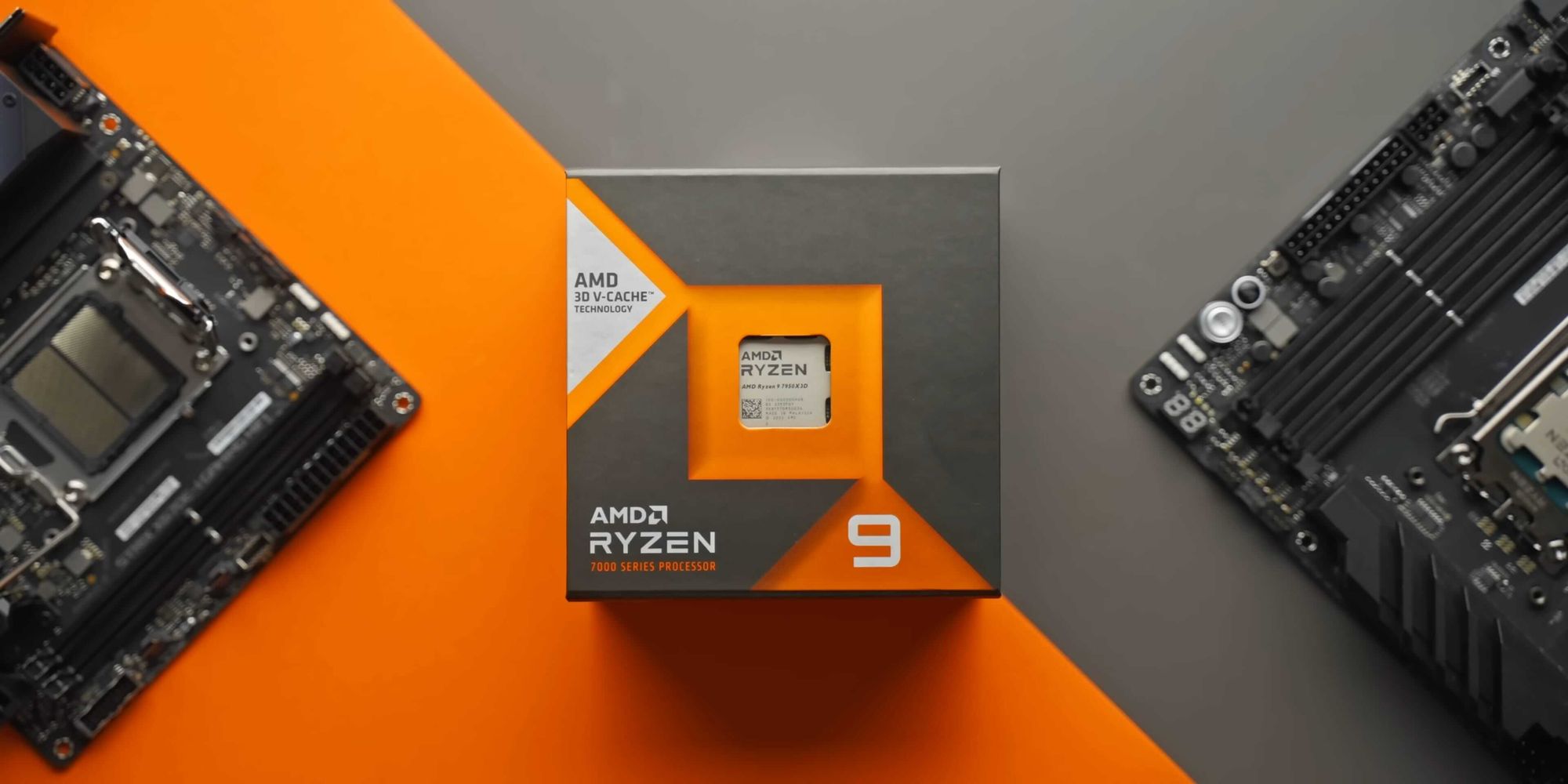
4. Niobium Batteries
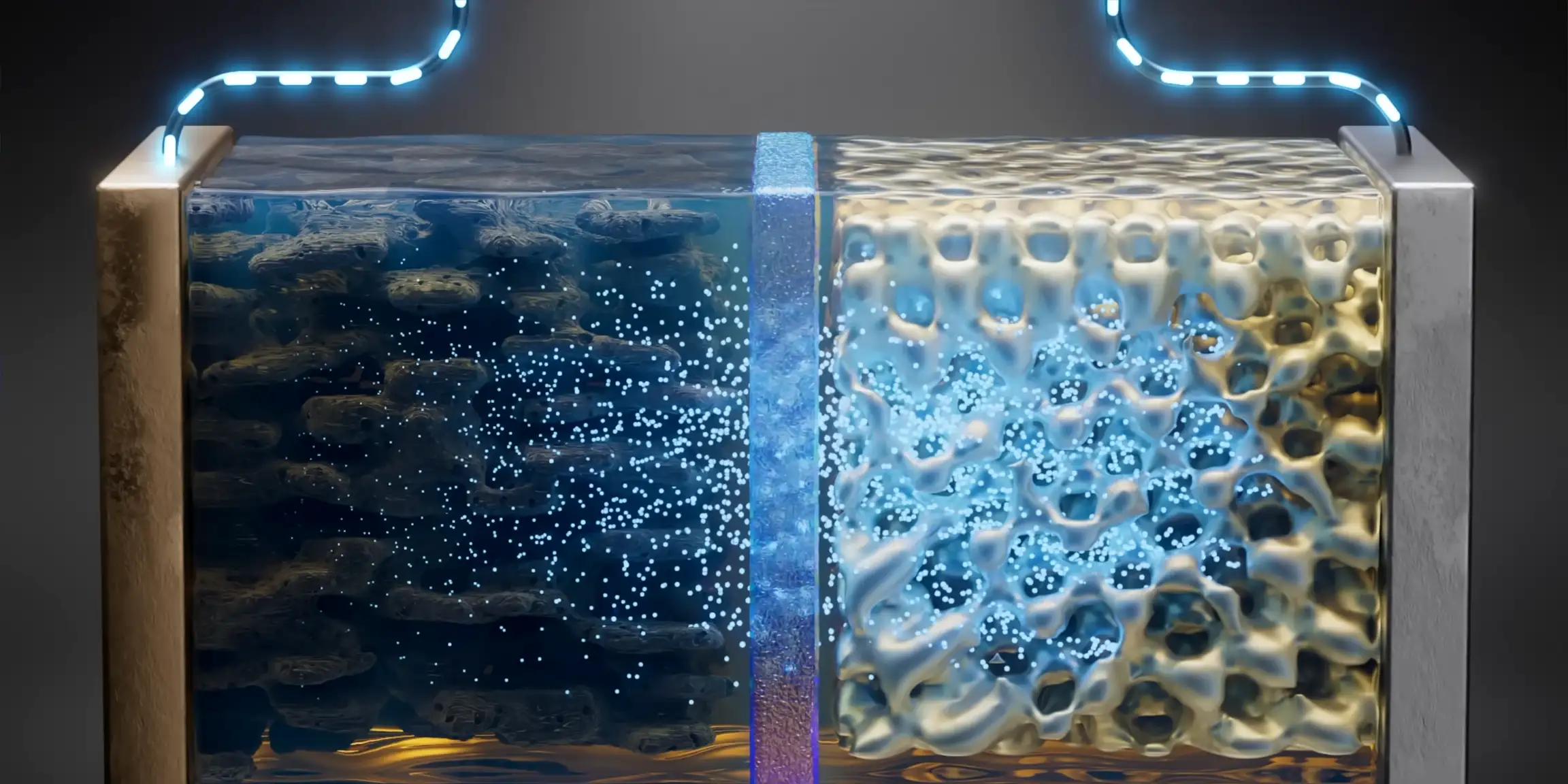
Niobium is a chemical element that has found its application in batteries due to its unique properties. Most traditional batteries have a problem with intercalation, which slows down their charging rate. Intercalation refers to the process of storing ions or molecules in layered structures, and it's the primary process behind charging most batteries.
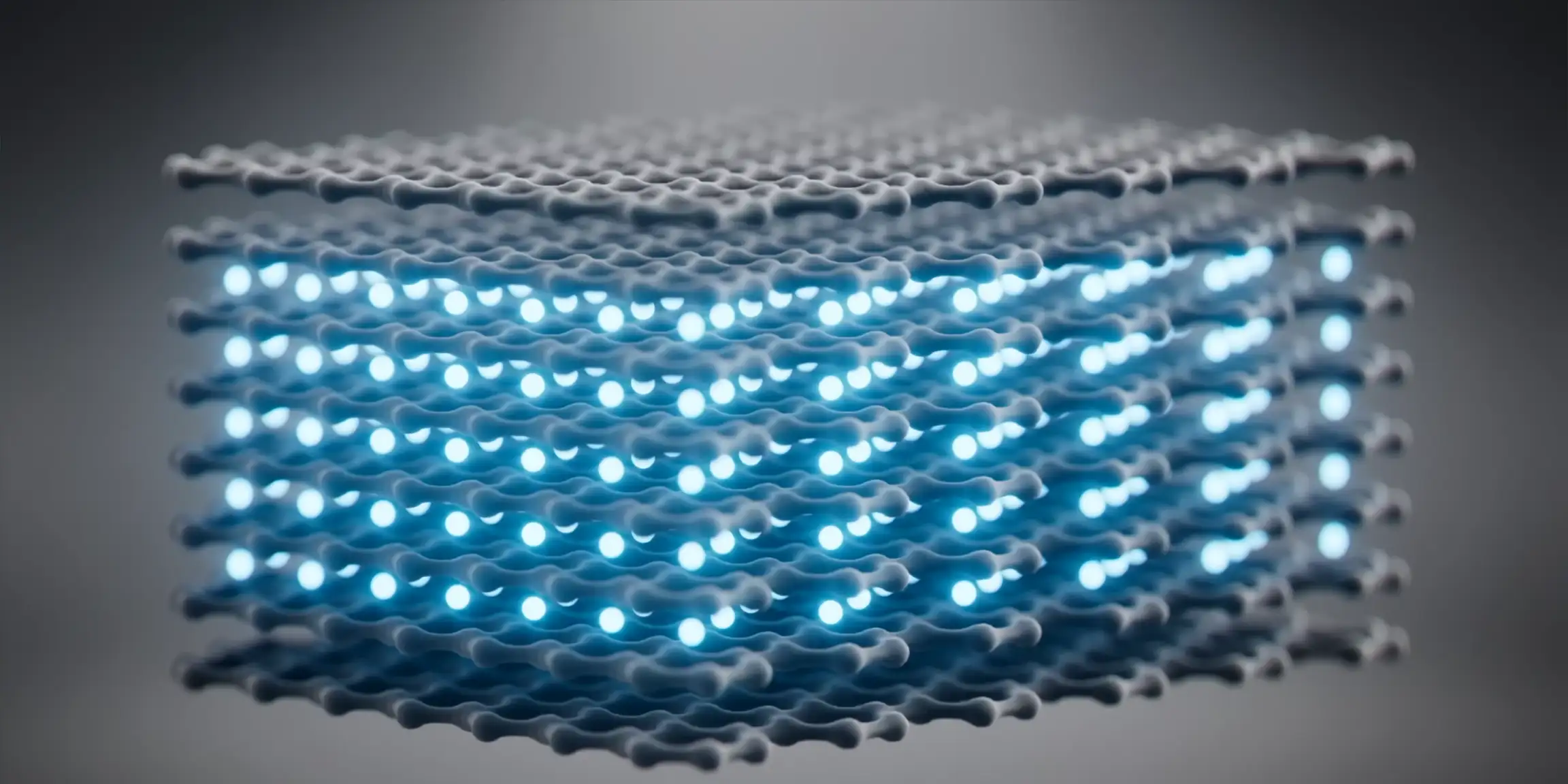
In Lithium-ion batteries, intercalation happens when the Lithium-ion moves from the cathode and inserts into the graphite anode. This process is reversible, and there's only so fast it can happen.
However, with a niobium anode, the battery can sidestep this problem. Niobium has a unique structure that allows for extremely fast charging and discharging, making it possible for a niobium battery to function more like a capacitor than a traditional battery. This unique property makes it not too far off from the SuperBattery, which is a super-capacitor/battery hybrid produced by Skeleton Technologies in Estonia and Germany.
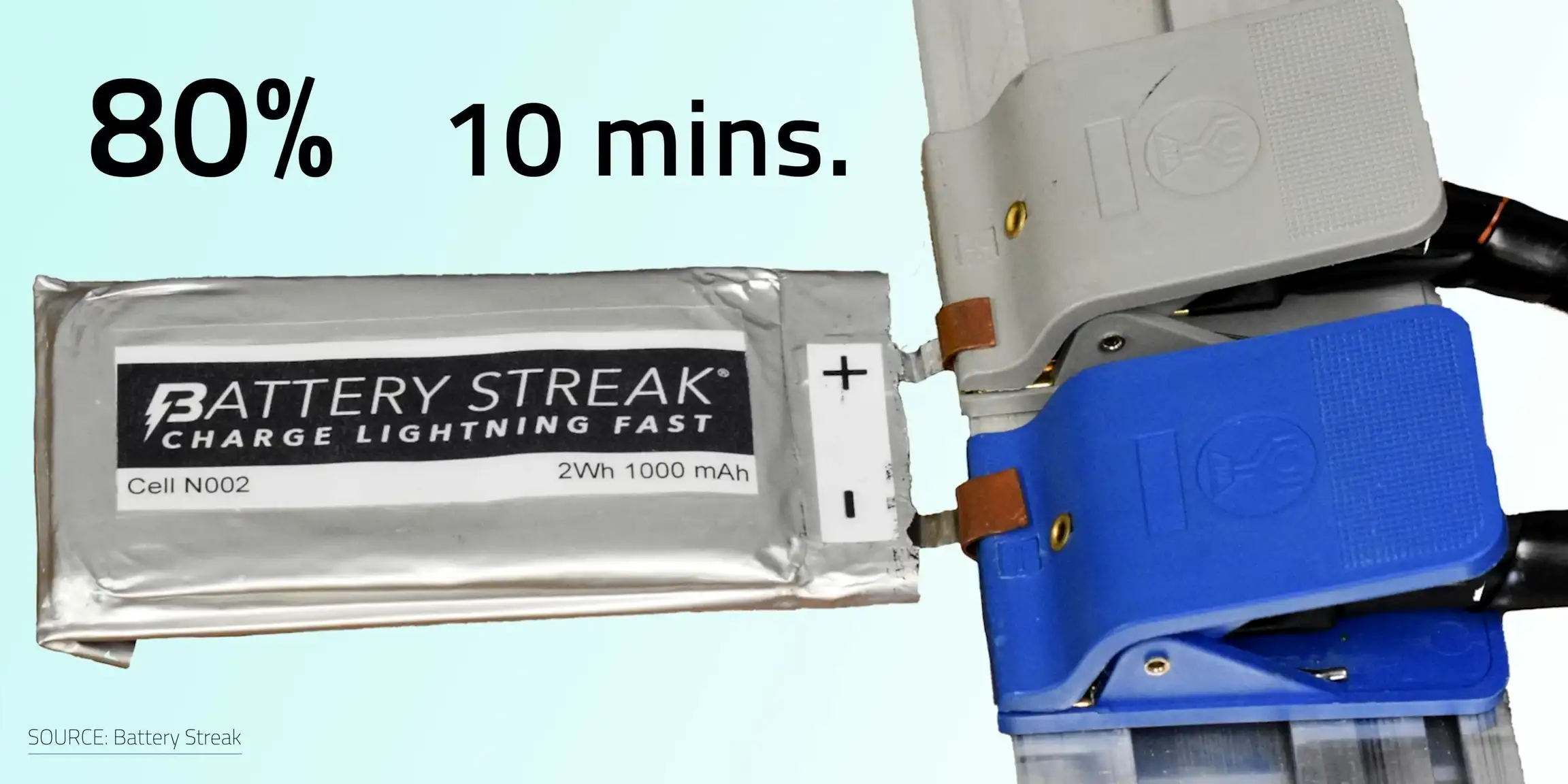
Battery Streak, a Californian-based company, is currently trying to commercialize niobium batteries that can charge up to 80% in just 10 minutes, equivalent to a C-rate of about 6C.
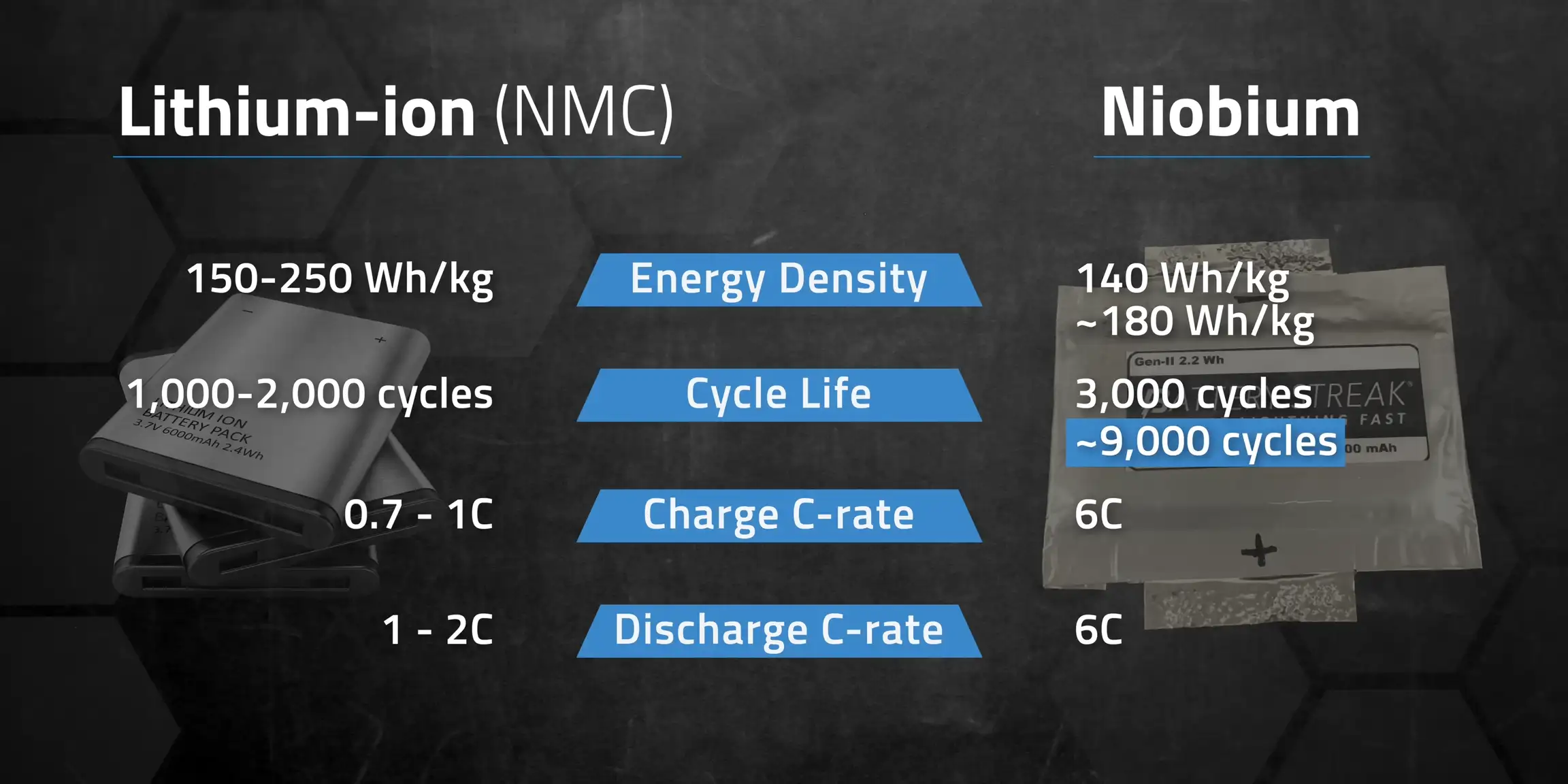
This charging speed doesn't sacrifice much energy density, as these batteries can pack about 140 Wh/kg, with the goal of reaching 180 Wh/kg, and last for up to 3,000 cycles. Battery Streak has even tested them at up to 9,000 charge cycles.
Another advantage of niobium batteries is that they can stay cool even when charged at a very high rate, unlike most other batteries. While the temperature gradient for a standard battery is about 27 C, a niobium battery's temperature gradient is significantly lower at 8 C.
However, the downside to niobium batteries is that there's an infrastructure problem, which means that even if they were to be used in electric vehicles, there's currently no infrastructure available to charge them at full capacity. Battery Streak and CBMM, a Brazilian company specializing in niobium products, are hopeful that commercialization of niobium batteries can begin this year or in 2024.
5. Lithium-Sulfur Batteries

Lithium sulphur batteries represent a significant breakthrough in battery technology, demonstrating how small modifications can yield significant advances. These batteries are structurally and chemically similar to standard lithium-ion batteries but differ in the use of a sulphur cathode and a lithium anode instead of a lithium cathode and a heavy metal anode. The result is an incredibly energy-dense battery with a specific energy of approximately 443 Wh/kg, which is impressive but not without issues.
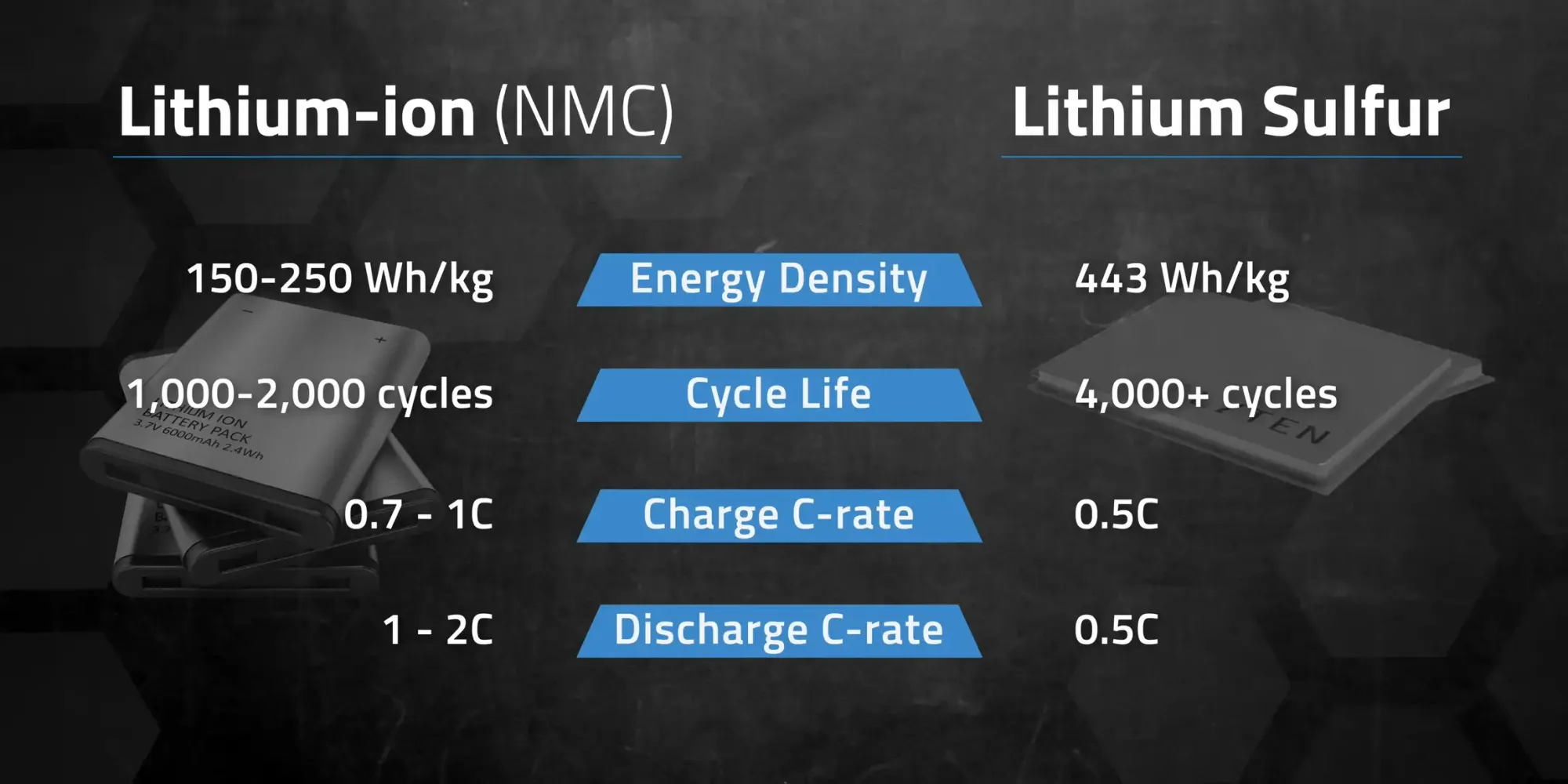
One significant drawback of lithium sulphur batteries is their tendency to degrade quickly due to the "polysulphide shuttle," an adverse chemical reaction between the polysulfides and the electrolyte solution that coats the anode and prevents the battery from working efficiently. However, researchers at Drexel University have successfully created a battery with a cycle life of over 4,000 cycles, which could be a potential solution to this problem.
Lyten, a California-based company, is also developing a version of a sulphur battery with a 1,400 cycle life, currently in the pilot phase, making it a significant competitor in the market. These batteries are expected to be used in consumer electronics, electric vehicles, or home energy storage, but not necessarily in grid-scale energy storage, where other technologies may be more suitable.
Conclusion
It's essential to note that there's no one-size-fits-all battery solution, as different batteries serve different purposes. While some may be suitable for electric vehicles, others may be better suited for stationary energy storage, making it unlikely for one battery to replace lithium entirely. However, several batteries have the potential to complement or supplement lithium in general and even supplant it in specific use cases.
As these emerging battery technologies hit their stride and find their niche, we can reduce our dependence on lithium, allowing us to enjoy its benefits without compromising our move towards a greener future.
Which battery technologies do you think have a good shot? Are there any you would add to the list? Let us know in the comments below.

FAQs
What is the future of energy storage?
The future of energy storage lies in advanced battery technologies such as solid-state batteries, flow batteries, and metal-air batteries.
What are the benefits of advanced battery technologies?
Advanced battery technologies have the potential to store more energy, last longer, and be more environmentally friendly than current battery technologies. They also have the potential to revolutionize the electric vehicle industry and enable more widespread adoption of renewable energy sources.
What are the challenges to commercializing advanced battery technologies?
Some of the challenges include cost, safety concerns, and scalability. Advanced battery technologies are expensive to produce, and safety measures need to be implemented to prevent accidents. Additionally, the manufacturing process needs to be streamlined, and the production rate needs to be increased to meet the growing demand for energy storage.
How do future batteries compare to current battery technologies?
Future batteries have the potential to be more energy-efficient, last longer, and be more environmentally friendly than current battery technologies. For example, solid-state batteries have a higher energy density, which means they can store more energy in the same amount of space, and flow batteries can be scaled up easily for large-scale energy storage. Additionally, some future battery technologies may use more abundant and sustainable materials, reducing the environmental impact of battery production and disposal.
How will future batteries impact the electric vehicle industry?
Future batteries have the potential to revolutionize the electric vehicle industry by enabling longer driving ranges, faster charging times, and lower costs. They may also make electric vehicles more accessible to a wider range of consumers, as they become more affordable and offer comparable performance to traditional gasoline-powered vehicles.
How will future batteries impact renewable energy storage?
Future batteries may also have a significant impact on renewable energy storage by providing a more reliable and efficient way to store energy from sources like solar and wind power. This would enable more widespread adoption of renewable energy sources and help reduce reliance on fossil fuels.

